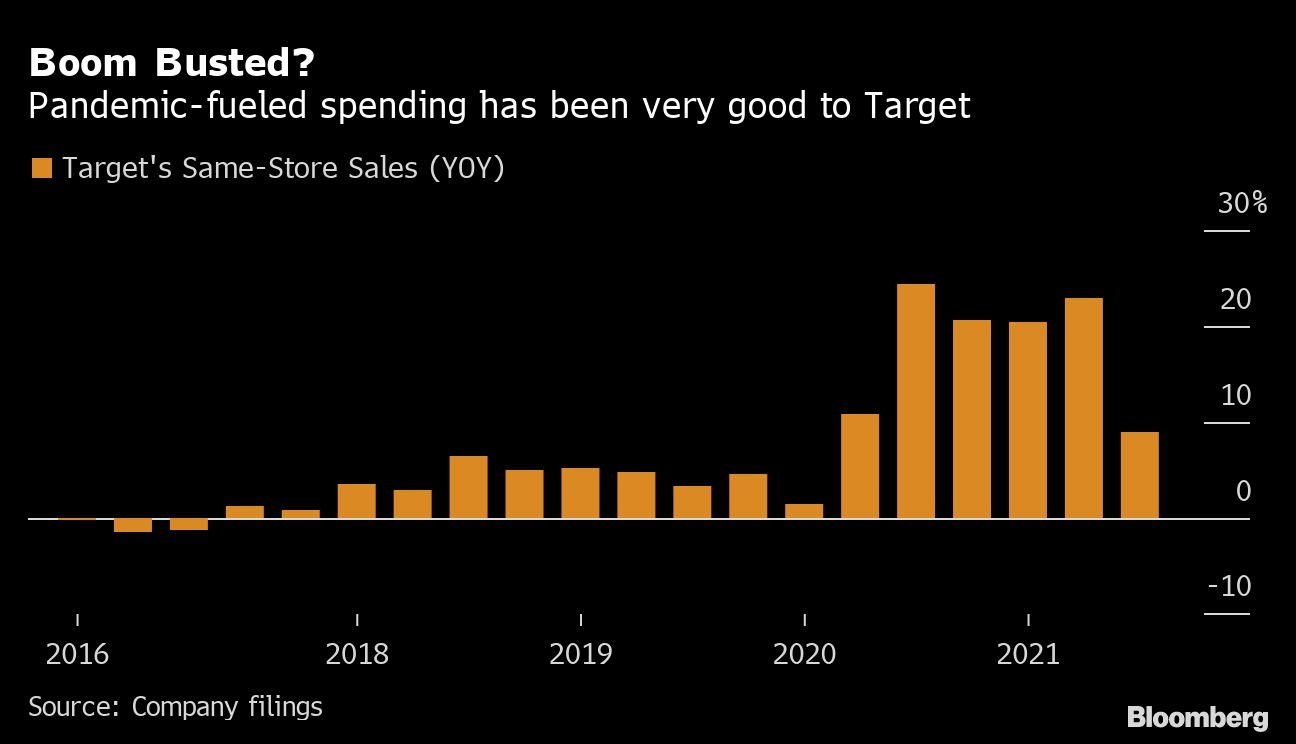Aug 18, 2021
Target beats on sales, but growth slowdown raises questions
, Bloomberg News
'Game is not over yet': CFRA analyst expects multi-year secular trend of investing in the home
Target Corp.’s sales growth slowed in the second quarter, hinting that the heightened consumer demand ushered in by the pandemic may be waning.
Same-store sales, a key measure of retail performance, rose 8.9 per cent, narrowly beating a consensus estimate of 8.2 per cent compiled by Bloomberg. Still, that was less than half the gain from a year ago. Meanwhile, profit margins tightened and e-commerce revenue rose by 10 per cent after nearly tripling a year ago.

The shares fell 2.4 per cent at 9:05 a.m. on Wednesday in premarket trading in New York.
Target has been arguably the biggest winner among major retailers during the pandemic, with its stock surging more than 40 per cent this year and nearly as much last year as demand soared for groceries, home goods and more. But as the chain goes up against the strong performance from 2020, it hasn’t outperformed expectations to the extent it did last year.
“With a very strong core business and a run of success, the key challenge for Target is to continue generating strong revenue growth,” Neil Saunders, managing director of GlobalData, said in a note. The company is looking to categories such as beauty to maintain what has been “impressive” growth, he said.
As rising COVID-19 cases fueled by the contagious delta variant put new pressure on consumer confidence, the retailer’s leader is sanguine about the company’s prospects.
“We continue to see a very optimistic guest,” Chief Executive Officer Brian Cornell said on a call with reporters. There hasn’t been a noticeable shift in behavior since customers “use caution as appropriate.”
STORE VISITS
Traffic, including visits to stores and the website, rose about 13 per cent in the quarter, reflecting customers’ increasing comfort venturing into public places compared to last year. While shoppers returned to physical locations in what the company described as “droves,” online revenue growth cooled off.
Still, Cornell noted that 95 per cent of total sales were fulfilled by stores -- a testament to the company’s investments integrating its 1,900 locations into the online supply chain.
Target’s results come a day after investors shrugged off a broadly positive report from rival Walmart Inc., reflecting the difficulty in maintaining enthusiasm for retailers that were early winners in the pandemic. One rising concern is how much consumer spending is being helped by short-term government stimulus, such as the monthly payments to families related to child tax credits.
“You wonder what’s the true margin profile of this business as they move into 2022?” said Brian Yarbrough, an analyst at Edward Jones. The company’s bottom line has also been boosted by fewer markdowns because demand is so strong, he said. “At some point, that reverses itself.”
Target said in May that it would increase profitability this year because it’s selling more higher-margin items, such as clothing, and sales would rise despite the tough comparisons. In the second quarter, apparel was the best performer of its five core categories, notching double-digit growth.
The retailer slightly raised its forecast on Wednesday, calling for same-store sales to increase at a high-single digit percentage in the second half, up from a prior projection of single digits. And full-year operating income margin rate will be 8 per cent or higher.
SHARE BUYBACKS
Target’s board authorized a new US$15 billion share buyback plan to begin after an earlier program is completed. There was US$1.8 billion of remaining capacity under the previous plan at the end of the second quarter, Target said.
Back-to-school is a crucial shopping period for Target and other chains, which largely missed the boost last year amid remote learning during the pandemic. The season still has several weeks to go, and Cornell said it’s gotten off to a strong start.
“If you look at our traffic numbers, it tells me we have a very resilient consumer,” the CEO said. “Right now, we’re not seeing any adjustment to consumer behavior.”





